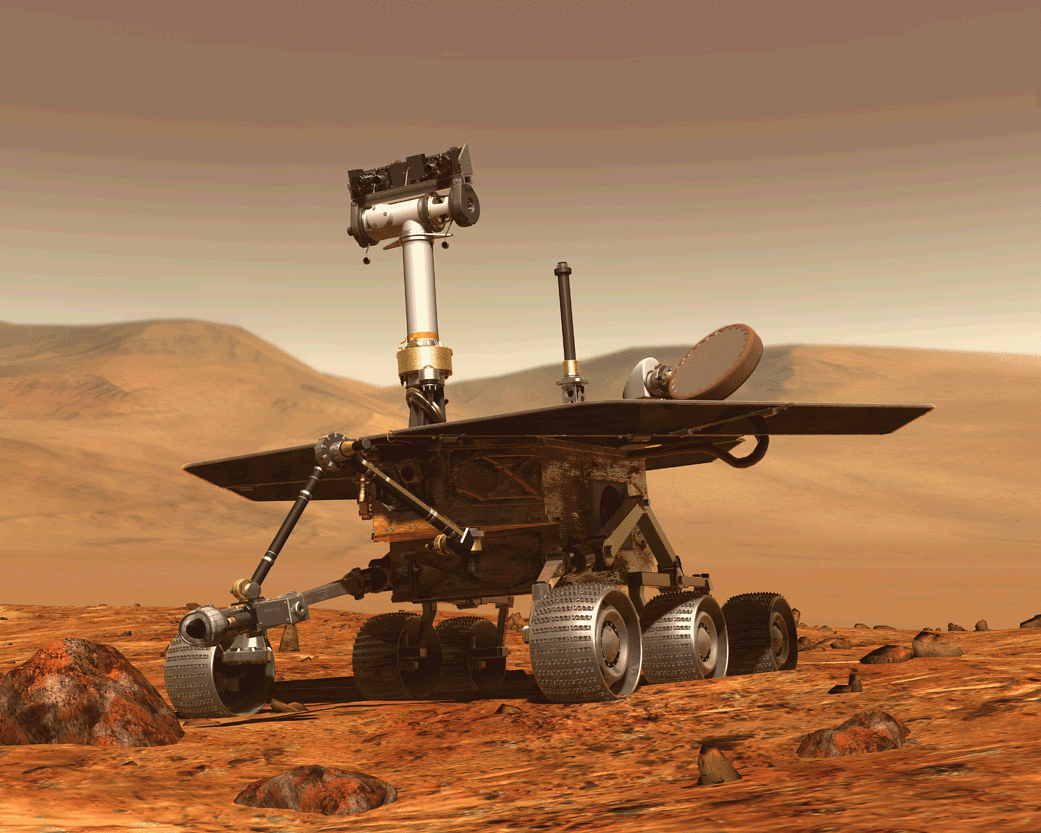NASA officially ends the Opportunity rover’s 15-year mission
The longest-running surface mission laid the groundwork for some big things ahead.

NASA finally pulled the plug on efforts to reestablish contact with its Opportunity rover on Mars, officially putting an end to the historic 15-year mission. The agency lost contact with the rover last summer after a massive dust storm swept over the planet and forced the Opportunity team to put the solar-powered rover to sleep. The agency hoped it could switch the rover back on once the skies cleared and the batteries could be charged again but, unfortunately, Opportunity never seemed to wake up and phone home, and NASA is now ready to move on.
“I stand here with a sense of deep appreciation and gratitude that the Opportunity mission is complete—and with it, the Mars Exploration Rover [MER] mission is complete,” NASA associate administrator Thomas Zurbuchen said in Wednesday’s press conference.
This latest announcement comes just a couple weeks after the agency announced it was trying last-ditch efforts to contact the rover. Last night, the Opportunity team sent its final set of recovery commands to the rover, and as of this morning, it had not heard anything back.
The mission’s ending brings a fierce mixture of both celebration and mourning. “Science is an emotional affair,” said Zurbuchen. “It’s a team sport. It’s a team that makes success like this.”
For nearly 15 years, Mars was what you might call the land of Opportunity, as the little Mars rover punched way above its weight and managed to roam the red planet well, well beyond its expected lifespan. “When this little rover landed, the objective was to have it go 1,100 yards and survive for 90 days on Mars,” said NASA Administrator Jim Bridenstine. “Instead here we are 15 years later after 28 miles of travel, and today we get to celebrate the end of this mission.”
Both Opportunity and its sibling rover, Spirit (which landed on Mars in 2004, just a few weeks before Opportunity and lasted until 2010), benefited from two major advantages that allowed them live longer lives than we could have ever expected. When the rovers landed, it was expected that dust would gradually accumulate on the rovers’ solar arrays and block any light from being absorbed. But Martian winds were surprisingly efficient dust-busters, periodically cleaning off the panels during windy seasons and always giving the rovers a lifeline.

The other reason, according to John Callas, MER project manager, is that “these rovers have the finest batteries in the solar system.” Even at the end, Opportunity’s batteries still had about 85 percent of their capacity. It could have gone on for another 15 years or so if not for the Martian weather.
In addition, the team found some ingenious solutions to some challenges that arose—in particular developing a “deep sleep” sequence that would shut off the rover’s heater at night to save power, cooling the rover down but keeping temperatures just warm enough to prevent hardware damage.
But last year’s historic dust storm seems to have been too much for Opportunity. The batteries were already low, and the dust storm meant sunlight would be completely blocked out from reaching the surface. And the loss of power means the rover’s internal clock can be scrambled. which may have disrupted the deep sleep sequence and kept the heater on too long, draining the batteries completely.
NASA sent new “sweep and beep” commands over the last couple of weeks in an attempt to reset the internal clock and other instruments. The rover never responded. The red planet’s latest windy season is about to end and give way to a southern winter that’s bound to cause irreparable damage to the rover’s unpowered batteries and other hardware (the same fate Spirit met in 2010).
Still, Opportunity—and Spirit—leave behind a legacy that’s nothing short of astounding. Steve Squires, the principal investigator for the MER missions, calls the rovers “robotic field geologists,” tasked with looking for clues to find out what happened to Mars long ago, when it was “the kind of place that would have been very, very suitable for some kinds of very hardy microbes.” Oppy had the chance to study some of the most vibrant landscapes on Mars, unearthing new revelations about the planet’s hot, violent history.
In addition, these missions “produced a generation of scientists and engineers that now go on to do greater things,” said Callas. Scores of young people have been inspired by the rovers, and some careers leaped forward as a result of their work on these missions.
Without Opportunity, there would be no Curiosity rover, and there would be no Mars 2020 rover launching next year. The MER program showed it was possible to build a planetary geologist out of wires and metal. The rovers completely shifted the paradigm for how we approach planetary exploration in the solar system. And as we push forward more aggressively in exploring Mars and one day landing human boots on the surface, the work of the MER team will live on.
You can watch live in the feed below as NASA representatives share everything we know about Opportunity and say an official goodbye to the longest-running surface mission in space exploration history.